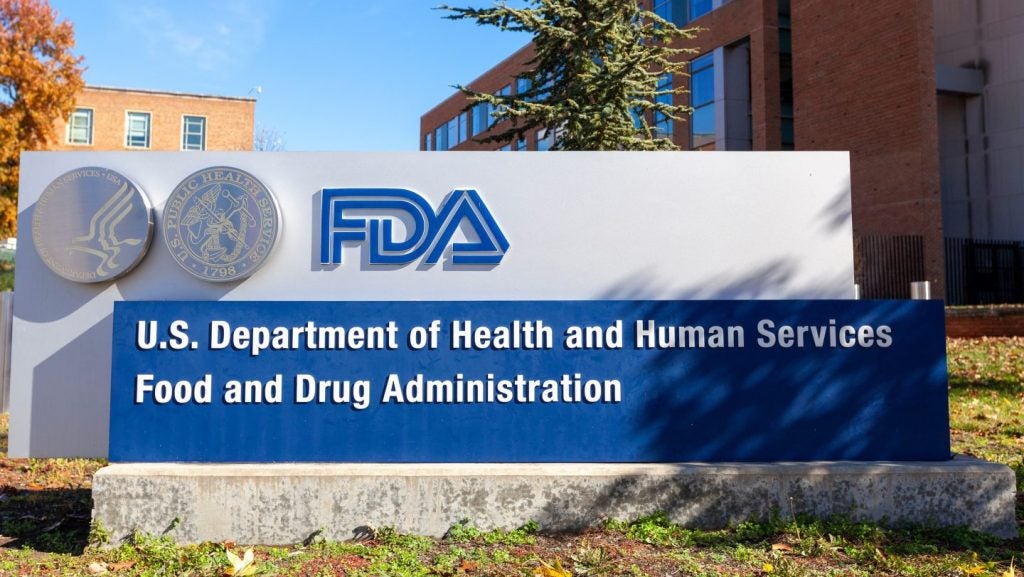The fixes needed at the US Food and Drug Administration to avoid a repeat of last year’s infant formula crisis read like a laundry list. Yet the FDA, facing calls for reform, has so far proved resistant to suggestions it should spin off the oversight of food.
James Jones, a former Environmental Protection Agency executive, faces what appears to be a Herculean task to reform the food side of the food safety regulator as he prepares to take on the newly created role of deputy commissioner of the Human Foods Program (HFP). While that’s an important first step welcomed by industry observers, experts say it will take years to solve the FDA’s problems and a significant amount of money, too.
Suggestions are, however, that Congress is unlikely to approve wads of cash being thrown at reforming the FDA because, in the agency’s current form, it would be like flogging a dead horse.
“If you’re providing more resources to a structure that’s inadequate, it would be a waste of taxpayer funds and it wouldn’t get us anywhere closer to a system that helps prevent illness,” Brian Ronholm the director for food policy at the Washington-based research group Consumer Reports, says in reference to the food recalls that plague the FDA.
Ronholm, a former deputy under-secretary for food safety at the United States Department of Agriculture (USDA), says the FDA is “chronically under-funded” and needs to have a “strong system in place first and then infuse that system with more resources so that it’s better equipped”.
He welcomes the appointment of Jones, having a manager in charge of food alone to support commissioner Robert Califf, who last year called for better funding in the wake of the well-publicised infant formula recall.
“It’s certainly no panacea but it’s a good first step,” Ronholm says. “If you’re putting someone in place that has that expertise, that experience at running a programme that can develop strategic plans, that can control budgets, that would be a significant step because that’s what’s lacking at the agency right now.”
Undeclared allergens top recalls
Infant formula aside, undeclared allergens ranked top of the recall list last year, according to the Food Safety and Inspection Service (FSIS), the part of the USDA responsible for food safety oversight in meat and poultry. So-called processing deviations, foreign materials, food-borne illnesses such as listeria monocytogenes and pathogen STEC, import violations, mislabelling and insanitary conditions followed, in that order.
Plant inspections and on-site inspectors at manufacturing facilities are key areas of contention, with the challenges encompassed by Sarah Sorscher, the director of regulatory affairs at the Centre for Science in the Public Interest (CSPI), a non-profit consumer advocacy group in Washington.
Sorscher, who testified at last year’s Reagan Udall inquiry, called by Califf into the handling of the infant formula debacle, says the FDA gets as much money as the USDA. However, she adds that the latter has around 6,000 to 7,000 regulated facilities, while the FDA has somewhere in the region of 120,000.
“There’s just no way for the agency to get fully up to speed on every industry. They try to prioritise, they try to focus on highest risks, they try to inspect infant formula more frequently than other facilities, but it’s almost an impossible burden for them to keep up with,” she explains.
“USDA is visiting a meat slaughterhouse every day, every shift. For the FDA, it’s for the highest-risk facility for infant formula, it’s once a year and, for other high-risk facilities, once every three years. And then, for everybody else, it’s once every five years.
“Their funding and their ability to do the work is not really commensurate with the need. Funding is huge, but would funding alone solve this problem? No, it wouldn’t, because it’s a culture problem, it’s a leadership problem because it’s a problem with underlying authority to act.”
Ronholm says that unlike meat plants governed by the USDA, the FDA is tasked with overseeing 80% of the rest of the food system, where it’s “very rare” many factories get inspected. “There’s not that cop on the beat” but it would be “virtually impossible to provide enough funding for there to be a constant presence”, he suggests.
Of the other potential fixes needed at the FDA, industry observers point to, in one form or another, transparency, accountability, bureaucratic barriers, lack of stakeholder engagement, enforcement capabilities and communication, aside from money.
Spin-off food
Professor Neal Fortin, a director at the Institute for Food Laws and Regulations at Michigan State University, says the appointment of Jones to the HFP is a “bright” spot but warns reforms could take “years”.
He suggests, like others before him, that food should be spun off from the FDA into a separate entity.
“There is a joke that the F in FDA is silent. Frankly, it is hard to see the necessary significant changes will be made unless we take the F out of FDA. A standalone food agency could help solve many of the problems faced by the HFP,” Fortin says.
“The FDA faces a growing number and complexity of issues with drugs and medical devices. The Food Program issues often receive less attention. The FDA commissioners nearly always come from the medical side of things and have little experience with food issues. This mismatch is a recipe for less decisiveness on food issues and responsibilities.”
Sorscher also shares the view around personnel, although she too welcomes Jones’ appointment. “We want decisions about public health to be made by public health officials who are accountable to the public,” she says, noting the new deputy commissioner doesn’t have a public health or food background.
Nevertheless, a new leader might just be “conducive to weeding out and addressing problems”, she adds.
“It’s hard to imagine any set of structural changes that’s going to solve all of their problems because they have deep-seated issues with their culture, with their underlying authority that Congress has given them to do this work,” Sorscher explains.
“It’s become calcified. Its own interpretation of its own authority has become so narrow and conservative that it becomes difficult for it to do things. For example, the FDA believes that it doesn’t have authority to require companies to test the environment for pathogens. They’re asking Congress for more ability to do that.
“One of the things that advocates are hoping for is a more unified structure, more accountable structure, transparent structure and having that single leader to make sure that policy decisions are guided by someone who’s focused on consumers, someone who is proactive, someone who is accountable to the public, versus this sort of diffuse, confused authority that we have now.
“Their problems are really baked in throughout the programme and it’s going to be harder for the agency to address those. But having the right leadership setting the tone for culture is going to be a good start.”
The FDA’s “dysfunction”
Ronholm says the infant formula recall was an example of the FDA’s “dysfunction” and how the agency is structured and governed, with the HFP focused more on the response side rather than prevention.
“It was inadequate to not only prevent a problem but to address it adequately,” he suggests, adding the HFP needs to be “modernised”.
“It’s not really trying to establish a culture of prevention that’s critical for preventing foodborne illness. The critical pieces for this, there needs to be transparency, there needs to be accountability and there really needs to be meaningful stakeholder engagement – not only food companies but consumer groups and other regulators – an all-hands-on-deck type of engagement to ensure that they’re getting all of the information they need to move forward with any types of initiatives and proposals,” Ronholm explains.
However, reforms will take time, probably a couple of years, he suggests, noting the “bureaucratic barriers” that exist from his time in government.
“There’ll be a lot of internal barriers. It points to the culture at the FDA, it relies on inertia. Everyone’s used to doing their thing for such a long time, that’s the definition of a bureaucracy. It’s very difficult to get people to think differently from what they’re used to thinking.
“They’re not really taking that bigger picture: how do we put in place a system that best prevents foodborne illness? Addressing the siloed thinking at FDA certainly would go a long way in putting in place a system that could prevent future crises. It’s a tough road ahead, for sure.”
Fortin also believes the FDA is under-funded considering its “vast responsibilities”, with insufficient staff also an issue.
“Food regulation by the FDA is frustratingly slow or absent. The agency is both slow to act and reluctant or timid to act. Decisions and actions the public expects to happen in weeks or months take years,” he says.
“There are many talented and dedicated people at the FDA, but they are hampered by a fragmented organisational structure that disperses responsibility and reinforces hesitancy to act. Structure changes alone won’t solve the problems in the FDA Food Program but the lack of a single line of authority and accountability is a serious obstacle to improvement.”
Information sharing
Sorscher says there needs to be more transparency within the FDA, which is often reluctant to share information regarding inspections and to report its findings to industry and state regulators because of disclosure rules.
“These firewalls have been built up over time – that’s where a lot of the criticism comes in. It’s around information sharing with stakeholders and it’s around just offering useful guidance in real time,” she suggests.
“Any kind of passing statement by a government official is put under a magnifying glass and so, over time, the agencies become very timid about saying anything, if it hasn’t been reviewed by ten layers of bureaucrats. That can be a real challenge for you making decisions quickly and making decisions that are protective of consumers.”
Sorscher says the FDA is pressing Congress to relax the disclosure rules so the agency can more easily share information with state officials and it may mean reviewing those regulations and how the laws are interpreted.
The CSPI would like to see more prevention in adding allergens to foodstuffs and firmer rules on traceability, as she points to the 2018 episode of e-coli in romaine lettuce where the FDA was restricted from making inspections on nearby animal feeding farms identified as the source of the outbreak.
“Congress has to act to really give FDA the ability to go to animal farms. The FDA needs to be able to go on to that operation and identify the source and it doesn’t actually have authority to do that. They get kicked out by the farm. We’ve been working with Congress to get a bill passed; the expanded food safety investigation act will help address that.”
Nevertheless, time seems to be the critical factor behind the FDA reforms. “It's going to take more than just new leadership to solve these problems,” Sorscher says.
“Since the passage of the Food Safety Modernization Act in 2010, there's been a lot of effort by appropriators to fund the Food Program. You’ve seen those numbers tick up again but they’ve really only reached the level that they were in the 70s in terms of the number of people working at FDA.
“There’s a long road ahead for the Food Program. Everything takes a long time at FD, and that's one of the problems. They’re still working on rules under the 2010 Food Safety Modernization Act, they’re still working on finalising rules and it’s been 13 and a half years.
“And of course, the industry has grown tremendously. They have a bunch of new authorities since the 70s – they’ve got new statutes on labelling and infant formula and food safety. The workload has grown hugely and they have the same number of people doing the job. It’s unsustainable.”
Sorscher suggests the priorities for the FDA reforms should be based around “breaking through that bureaucracy and that conservative mindset around developing policy and then also to promote transparency and better relations with stakeholders”.
And she says with the appointment of Jones as deputy commissioner the CSPI is hoping to see a “steady improvement and that this change is going to lay the groundwork for that improvement”.
Having Jones on board will provide centralised control to an FDA structure that effectively has several people in charge of the HFP, reporting directly to Califf, Ronholm says.
“When you have that type of structure, there’s really no accountability,” he adds. “Everyone is going to be scrutinising how FDA moves forward with their proposals.”
















